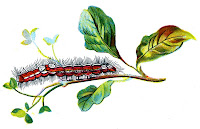Sensitive Periods and the Child, Part 1
When Maria Montessori discovered the secret of childhood more than 100 years ago, she revealed the child to the world as he had never been seen before. She showed us that from birth, the child is in the process of self-construction, and wrote in The Secret of Childhood,
“We can no longer remain blind to the psychic development of the child. We must assist him from his earliest moments. Such assistance will not consist in forming the child since this task belongs to nature herself, but in a delicate respect for the outward manifestations of this development and in providing those means necessary for his formation which he cannot obtain by his own efforts alone.” (p. 46)

The idea of the sensitive period for development of certain characteristics in nature was adopted by Dr. Montessori and applied by her to the development of the child. She considered the sensitive periods to be a characteristic of the absorbent mind and believed that they are universal to all children. Her scientific observations of children demonstrated that these Sensitive Periods act as inner guides in the child and they direct the absorbent mind in a specific sequence and manner of activities. She wrote,
A sensitive period refers to a special sensibility which a creature acquires in its infantile state, while it is still in a process of evolution. It is a transient disposition and limited to the acquisition of a particular trait. Once this trait or characteristic, has been acquired, the special sensitivity disappears. (p.38)
Growth is therefore not to be attributed to a vague inherited predetermination but to efforts that are carefully guided by periodic, or transient, instincts. These give direction by furnishing an impulse toward a determined kind of activity that can differ notably from that of the adult of the species. (p.38)
REFERENCES
Montessori, Maria. The Secret of Childhood. Ballantine Publishing Group, New York, NY 1966.
Montessori, Maria. The Absorbent Mind. Clio Press, Oxford, England, 1988.
Rhonda Lucas-Sabater is an AMI Auxiliary Trainer at the Primary (3-6) level. She is the mother of five Montessori children and the co-founder of a public charter Montessori school in Washington, DC. She is also AMI trained at the Assistants to Infancy (O-3), Primary (3-6), and Elementary (6-12) levels and is an AMI certified Adolescent guide.

